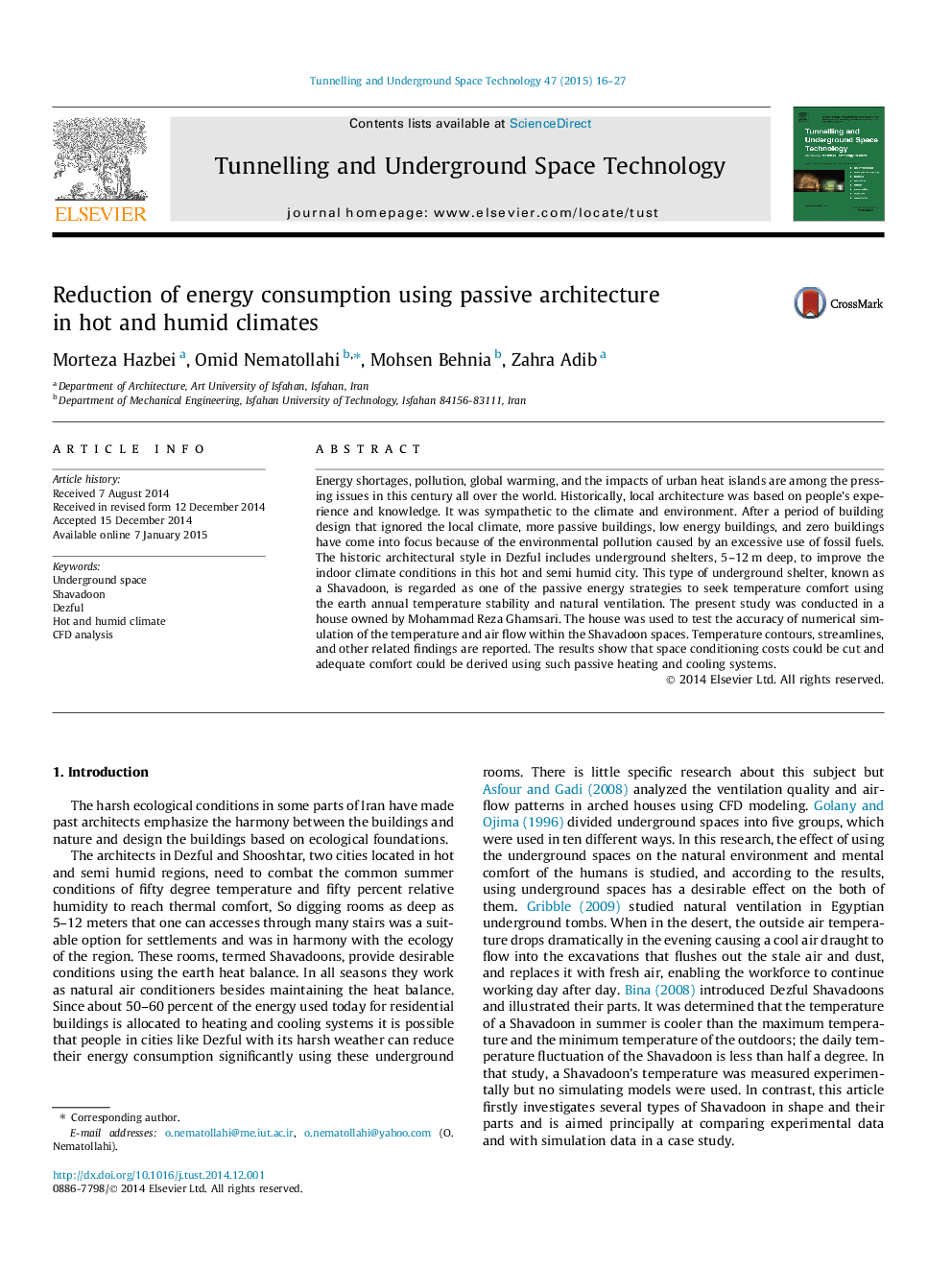| Article ID | Journal | Published Year | Pages | File Type |
|---|---|---|---|---|
| 311782 | Tunnelling and Underground Space Technology | 2015 | 12 Pages |
•A passive architecture presented for hot and humid climates.•This architecture reduced the energy consumption in buildings.•To reduce energy consumption in buildings this architecture has been proposed.•A case study was analyzed and compared with experimental measurements.•Using these buildings for cooling and heating is economical.
Energy shortages, pollution, global warming, and the impacts of urban heat islands are among the pressing issues in this century all over the world. Historically, local architecture was based on people’s experience and knowledge. It was sympathetic to the climate and environment. After a period of building design that ignored the local climate, more passive buildings, low energy buildings, and zero buildings have come into focus because of the environmental pollution caused by an excessive use of fossil fuels. The historic architectural style in Dezful includes underground shelters, 5–12 m deep, to improve the indoor climate conditions in this hot and semi humid city. This type of underground shelter, known as a Shavadoon, is regarded as one of the passive energy strategies to seek temperature comfort using the earth annual temperature stability and natural ventilation. The present study was conducted in a house owned by Mohammad Reza Ghamsari. The house was used to test the accuracy of numerical simulation of the temperature and air flow within the Shavadoon spaces. Temperature contours, streamlines, and other related findings are reported. The results show that space conditioning costs could be cut and adequate comfort could be derived using such passive heating and cooling systems.
Graphical abstractFigure optionsDownload full-size imageDownload as PowerPoint slide
